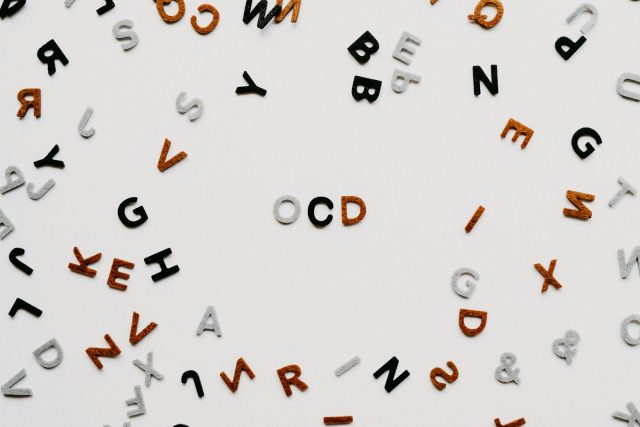
Obsessive-Compulsive Disorder (OCD) is a multifaceted and sometimes deeply misunderstood mental health condition that goes beyond stereotypes and surface-level assumptions. At its core, OCD is defined by the recurring presence of obsessions – intrusive, unwanted, and often distressing thoughts, images, or urges. These obsessions are typically paired with compulsions, which are repetitive behaviors or rituals performed to try to alleviate the anxiety the obsessions cause. The impact of these obsessions and compulsions can be severe, leading to substantial disruption in a person’s day-to-day life, relationships, and sense of well-being.
Many people only recognize the more commonly portrayed aspects of OCD, such as hand washing or checking locks, but the condition encompasses so much more. In reality, OCD can express itself in highly individualized patterns, often making it difficult to recognize without knowledge of its spectrum. For those seeking clarity about their symptoms or the symptoms of a loved one, understanding the diversity of OCD’s manifestations is invaluable. Approaches like OCD treatment Denver demonstrate how individualized care, informed by a clear understanding of subtypes, can lead to much more effective and lasting results. Early identification supported by a nuanced awareness of subtypes can be a game-changer in connecting people with the help they need.
The Spectrum of OCD Subtypes
Obsessive-Compulsive Disorder (OCD) is a spectrum disorder that encompasses a wide range of symptoms and severity levels. By identifying distinct subtypes of OCD, clinicians and individuals can better describe their unique experiences, which leads to more effective support. However, those who do not fit the stereotype of “cleanliness OCD” may feel overlooked or misunderstood, resulting in significant psychological distress.
OCD is ranked among the top 20 causes of illness-related disability for adults worldwide, especially affecting individuals aged 15 to 44. Recognizing and validating the various subtypes of OCD can help prevent overdiagnosis or misdiagnosis. This understanding empowers individuals, caregivers, and professionals to intervene more effectively and earlier, often before symptoms worsen.
Common OCD Subtypes
As OCD is recognized as a spectrum condition, several distinct subtypes frequently emerge and are discussed in both clinical and lay communities. Knowing these subtypes helps both sufferers and those around them make better sense of the symptoms, removes undue stigma, and directs people toward resources that specifically address their kind of OCD. Here are several common subtypes, though it’s worth noting that many people experience a combination of these, and new themes continue to emerge in scientific literature.
Contamination OCD
- Driven by an intense and persistent fear of germs, dirt, or other contaminants, individuals with contamination OCD often believe that touching particular objects, entering specific environments, or coming into contact with people could result in illness or harm to themselves or others.
- Compulsions manifest as excessive hand washing, cleaning, disinfecting, or avoiding public places altogether. This can lead to raw skin, social isolation, and overwhelming dread about inadvertent contamination.
Symmetry and Order OCD
- This subtype involves a powerful urge to arrange objects, numbers, or activities in a “just right” manner. Distress emerges if symmetry or balance is disrupted.
- Associated compulsions include lining up objects, repeatedly counting, touching, or tapping items in specific sequences. The need to maintain order can govern life, sometimes at the expense of time, energy, and spontaneity.
Checking OCD
- People with checking OCD are plagued by fears of causing harm or making grave mistakes. This translates into repeatedly checking things like locks, stoves, or appliances, even when there is no rational reason to believe they are at risk.
- The fear of being responsible for a catastrophe, such as a fire, break-in, or injury, can become so overwhelming that leaving the home or finishing tasks becomes a significant challenge.
Harm OCD
- Characterized by unwanted, vivid thoughts about causing injury to oneself or others, harm OCD can be profoundly distressing, especially since these thoughts are in direct opposition to a person’s values.
- A person may mentally review or ritualistically “neutralize” these thoughts with specific actions, prayers, or avoidance behaviors, sometimes leading to guilt and secrecy that further isolate them.
Puro-O (Pure Obsessional) OCD
- Unlike many other forms, Pure-O focuses on distressing obsessions without outwardly observable compulsions. These may center on taboo or existential themes, such as morality, sexuality, identity, or religion.
- Instead of visible rituals, compulsions are often mental, like reassurance-seeking, rumination, or avoidance of triggers. The secretive and internal nature of this subtype can delay diagnosis and support.
Other Notable Presentations
- Additional forms include somatic OCD (with obsessions focusing on perceived bodily sensations), relationship OCD (persistent doubts or fears regarding romantic relationships), and hoarding disorder, which is now recognized as related but separate in diagnostic criteria. These experiences further reflect the vast and evolving scale of OCD’s reach.
Why Subtype Awareness Matters
Understanding and recognizing specific subtypes of OCD is crucial for effective intervention and recovery. Different subtypes respond better to therapeutic approaches, such as exposure and response prevention (ERP) for contamination fears and specialized cognitive approaches for harm-focused themes. Advances in brain imaging studies have made personalizing support for each subtype more valuable. Increasing awareness helps break down the stigma associated with OCD, which is a serious condition that can cause intense suffering. Learning the full spectrum of OCD subtypes reduces dismissal and underestimates its impact. Supporting and validating individuals are more likely to continue with recommended therapy, which is crucial for long-term management and improvement of OCD symptoms.








